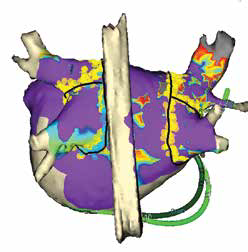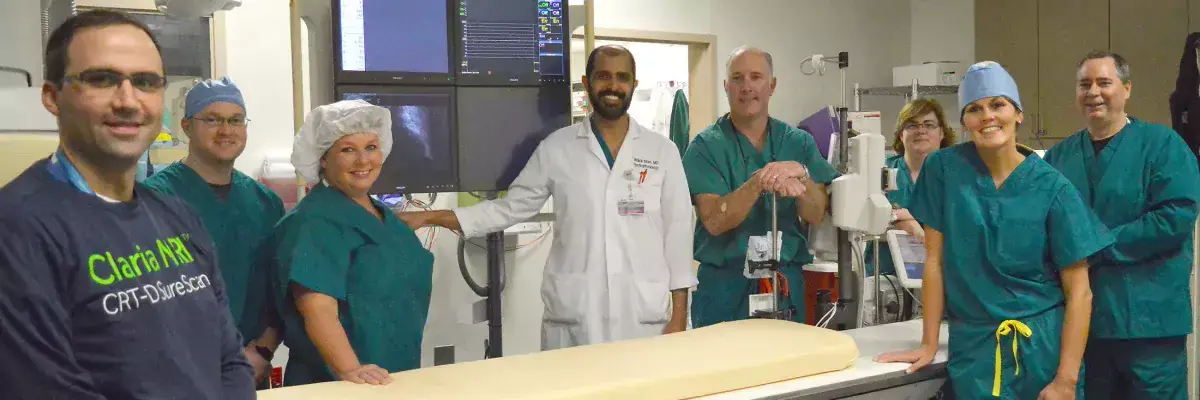Our hearts can beat too fast or too slow and even miss a beat here and there. We might think that it’s because we had too much coffee in the morning or that a close call on the highway frightened us.
But, we could also have something very wrong with the electrical system in our heart, which would mean our heart is sending out electrical impulses too often or at the wrong time.
Irregular heartbeat, arrhythmia, ventricular tachycardia (VT), and atrial fibrillation (AFib) can be serious and even life-threatening. They represent a common type of heart disease that interferes with the heart’s ability to pump blood throughout the body effectively and can cause blood clots, heart attack, stroke, and even death.
LEARN ABOUT YOUR RISK FOR AFIB.
There are a host of medications used to treat these electrical problems of the heart. However, when medication cannot help, advanced procedures are proving successful at stopping the heart from sending out the extra electrical impulses.
The physician with the support team inserts a catheter into a vein in the patient’s groin and threads it up into the heart. With the catheter, the physician delivers radiofrequency energy that heats and destroys the tissue causing the irregular heartbeat.
Throughout the procedure, the patient is under conscious sedation and is able to communicate with the physician. The patient normally is able to go home within a day or two.
An exciting medical technology that is used during this procedure is a 3-D mapping system that allows electrophysiologists to make an electroanatomic map (real-time geometry) of the heart. The image is displayed on a monitor in the EP Lab, and it is used to guide the team as they perform the ablation procedure.
CRYOABLATION AT BEEBE
Beebe electrophysiologists have also started using cryoablation to treat atrial fibrillation. This is a new advancement that freezes the damaged tissue in the heart, instead of heating it through radiofrequency.
“We are very proud to provide a wide spectrum of rhythm management services using advanced, cutting-edge technology, and we always strive to improve,” says Dr. El-Sabbagh, Director of Electrophysiology at Beebe. “We are dedicated to treating a patient as a whole person and to delivering the highest level of comprehensive care. We work closely with patients to ensure that they have a clear understanding of their treatment plan. It is very important to us that patients are comfortable with the therapies we provide.”

3D Electroanatomic Mapping System at Beebe. Electrophysiologists at Beebe use a 3D mapping system to perform complex ablations to treat atrial fibrillation. It is an advanced technology that allows him to make an electroanatomic map (real-time geometry) of the heart that is displayed to guide him in the ablation procedure and mark where ablation occurred. Pictured above is a complex ablation as seen with a 3D map merged with a CT angiogram.
Beebe Healthcare has had a cardiac program for more than three decades.
